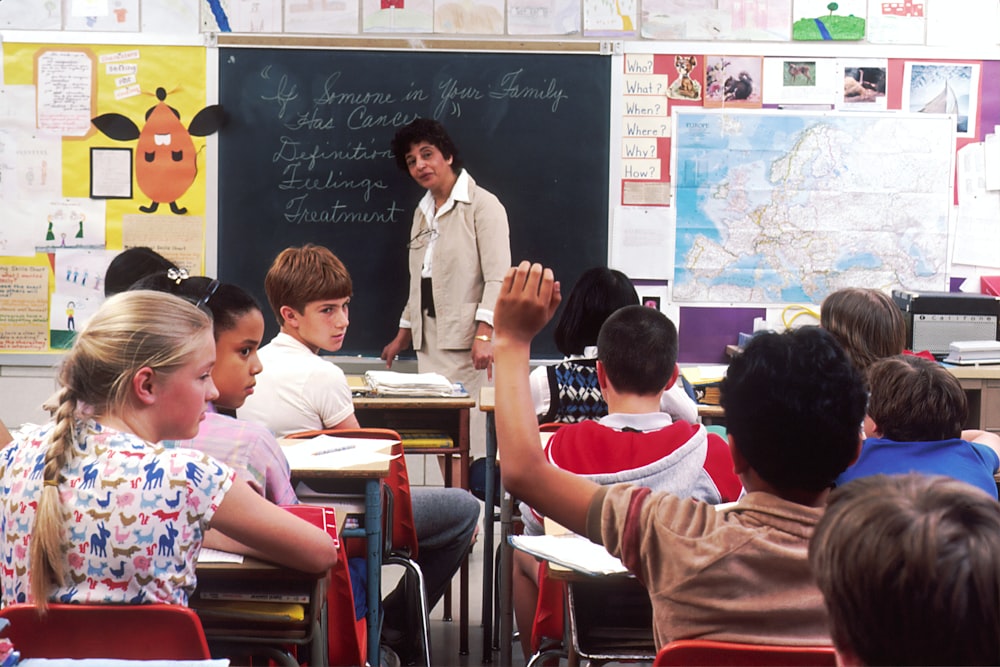AI in Education
Will AI Replace Teachers?
A burning question on the minds of educators is whether Artificial Intelligence (AI) will one day replace human teachers. It's a provocative thought, but our stance at Leo is clear and optimistic: no, AI will not replace teachers. Instead, AI holds the promise of revolutionizing education by alleviating the burden of repetitive tasks, such as grading and creating teaching material. This will enable teachers to devote more time to nurturing individual student growth and fostering more customized learning experiences.

The Complementary Role of AI in Education
The fear that AI could render human teachers obsolete stems from a misunderstanding of what AI is capable of and what teaching truly involves. Teaching is an art and a science, deeply rooted in emotional intelligence, empathy, cultural understanding, and the ability to inspire and motivate. These are quintessentially human traits that AI cannot replicate.
Enhancing Efficiency and Effectiveness
AI's true potential lies in its ability to perform tasks that, while necessary, can be time-consuming and tedious for teachers. These tasks include grading multiple-choice tests, managing administrative paperwork, and creating initial drafts of educational content. By automating these aspects of the teaching workload, AI can free up teachers to invest more time in what they do best: engaging with students on a personal level, understanding their unique learning needs, and guiding them through their educational journeys.
Personalized Learning
One of AI's most exciting applications in education is personalized learning. By analyzing data on students' learning styles, performance, and preferences, AI can help tailor the educational content and pace to suit each student's needs. This bespoke approach to education can significantly enhance learning outcomes but requires a human teacher's insight and intuition to implement effectively.
Leo: A Teacher-Centric AI Tool
Recognizing the invaluable role of teachers in the educational process, we designed Leo with a teacher-centric philosophy. Leo is not just another AI tool; it's a partner for teachers, designed to amplify their impact without undermining their authority.
Human-in-the-Loop Design
At the heart of Leo's design is the principle of keeping the human-in-the-loop. We understand that AI, no matter how advanced, cannot match the nuanced understanding and empathetic judgment of a human teacher. Therefore, Leo is built to assist, not override.
For instance, when it comes to providing feedback on written assignments, Leo performs a preliminary analysis to highlight areas that may need improvement and suggests possible enhancements. However, these are merely suggestions. The teacher has complete freedom to edit, modify, or disregard Leo's input before any feedback is relayed to the student. This approach ensures that the feedback is contextually appropriate, reflecting the teacher's understanding of the student's needs and learning journey.
Similarly, Leo's rubric-based grading algorithm is designed to offer an initial assessment of students' assignments based on predefined criteria. Yet, this grade is not final until the teacher reviews and approves it. Teachers can adjust the grade to better reflect the student's effort and understanding, ensuring that the assessment is fair and meaningful.
Teacher Empowerment
Leo's overarching goal is to empower teachers, not replace them. By automating the more mechanical aspects of teaching, Leo enables educators to focus on the creative, interpersonal, and highly nuanced aspects of their profession. This not only enhances job satisfaction for teachers but also enriches the learning experience for students.
If you liked this article, you might also like:
